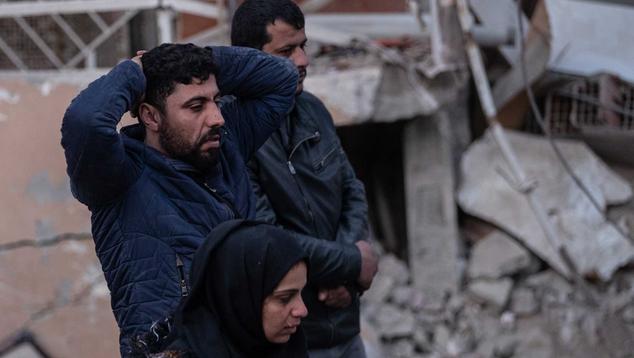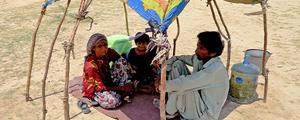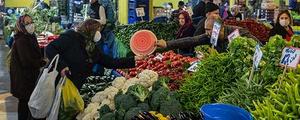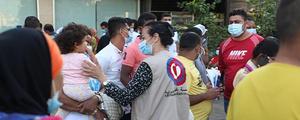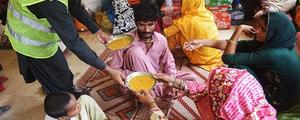Story Highlights
- 31% in the earthquake zone felt well prepared
- Quake struck region where millions were already vulnerable
- Vast majority were already dissatisfied with housing
WASHINGTON, D.C. -- Many factors contributed to the high death toll from the powerful earthquakes that shook Türkiye and Syria last month, but Lloyd's Register Foundation World Risk Poll surveys before the disaster show a minority of Turks (31%) living in the “earthquake zone” felt well-prepared to deal with such a disaster.
This percentage is not only well below the median for disaster preparedness in the earthquake-prone Middle East (47%), but it is also lower than in the rest of Türkiye (36%).
Many living in the earthquake zone -- the regions of Kahramanmaras, Gaziantep, Malatya, Diyarbakir, Kilis, Sanliurfa, Adiyaman, Hatay, Osmaniye and Adana -- were already vulnerable in social, economic and infrastructural terms, as well as being generally unprepared for disaster. Existing vulnerabilities have made it much harder for the zone to cope with -- and respond to -- the tragedy.
Why Were So Many People in the Earthquake Zone Vulnerable?
The concept of vulnerability is key to understanding what turns natural events into natural disasters. The greatest death tolls from earthquakes occur where the release of intense seismic energy meets high levels of human vulnerability.
First, Turks living in the area were vulnerable economically. According to data from Gallup's World Poll in 2022, a far higher proportion of Turks in the earthquake zone than in the rest of the country fall into the poorest 20% income group (34% vs. 16%, respectively). Slightly under half (44%) in the zone struggled to afford food for themselves or their families in 2022.
Social vulnerability also played a key role. People living in the earthquake zone were far less likely to have others they could count on to help them if they were in trouble (68%) than was true in the rest of Türkiye (86%). In other words, one in three people had no social support network.
In general, there are three main ways that humans can reduce the effects of natural disasters: preparedness and protection before the event, and mitigation afterward. In this event, existing vulnerabilities in the earthquake zone magnified shortcomings across all three.
Most living in the earthquake zone were unprepared for disaster. Just under a third (31%) of Turks living in the zone in 2021 felt they and their families could cope with such an event.
Further, even fewer -- 20% of Turks in this region -- said in the 2021 World Risk Poll that they had a plan for a future disaster that was known by all members of their household. Even though having a plan doesn’t guarantee survival in such an event, it is critical nonetheless and provides a useful guide for survivors to follow in the chaotic aftermath of natural disasters.
This lower figure could reflect that many had other worries. Asked in 2021 about the biggest concern in their day-to-day lives, the top mentions for Turks living in the zone were crime (20%), health (10%) and affording basics (10%). No one mentioned the risk posed by earthquakes.
Basic awareness of self-reliance techniques is also key for earthquake preparedness. Most victims are rescued in the few “golden hours” after building collapse. After earlier quakes in Türkiye in 1999, it is estimated that local people rescued 98% of the 50,000 pulled from the rubble.
Most victims were not protected by the buildings they were sleeping in. A second way of mitigating the destructiveness of earthquakes is through civil engineering, earthquake-proof design and strictly enforced building codes. As the famous adage goes: Earthquakes don’t kill people, buildings do.
Many Turks in the region lived in densely packed low-rise buildings with unreinforced brick masonry that were extremely vulnerable to shaking. Retrofitting according to new building codes -- introduced after the 1999 quakes -- was rare. In the 2022 World Poll, Turks in the earthquake zone were dissatisfied with the availability of good, affordable housing (76%) and roads and highways (54%).
Even much newer buildings collapsed, raising concerns about substandard construction practices and lax regulation. An analysis conducted after the earthquakes indicates that up to 75,000 buildings damaged by the quake failed to meet safety standards.
Effective mitigation and aid are key in the aftermath of disasters, but the government’s response has drawn criticism. Turkish President Recep Tayyip Erdogan has admitted imperfections.
Long-term disaster response planning is costly and requires large stockpiles of food and medical equipment. The Turkish disaster management agency -- AFAD -- has been criticized for its slow response. There have been reports of local rescuers not being able to get in contact with AFAD when most in need, even though in the 2021 World Risk Poll, most Turks (74%) living in the earthquake zone knew to look to a disaster management agency for information in such a situation.
Over a million people are now homeless in Türkiye, many of whom are struggling to survive in makeshift camps without access to food, water or heat. Others are sleeping on the streets, trying to keep warm by scavenging for wood to burn from the wreckage of their old lives.
Bottom Line
As the rubble is slowly cleared, the scale of this disaster is being brought into sharp focus.
It resulted from a devastating combination of seismic energy and human vulnerability. Millions were already vulnerable, not only because of their socioeconomic circumstances, but also wider structural issues found in preparedness and response efforts, as well as thousands of buildings themselves.
In addition to highlighting the need for strictly enforced construction and design codes, these data emphasize the need to ensure preparedness efforts reach everyone in society. Crucially, that includes the poorest and most vulnerable.
The earthquakes have only served to magnify preexisting vulnerabilities in the region. The road to recovery looks long.
For complete methodology and specific survey dates, please review Gallup's Country Data Set details.
Learn more about how the Gallup World Poll works.
